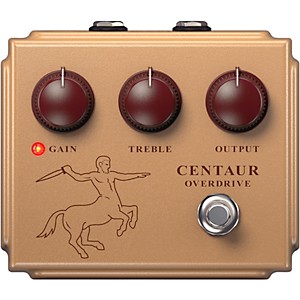Few drummers can match the showmanship and talent of Chip Ritter. His renowned stick tricks have made him a true musician, performer, and entertainer. Whether he’s filming DVDs, writing books, or teaching students, Chip’s eager to share his secrets and pass on his abilities.
Chip recently sat down with UberProAudio and discussed his gear, showmanship, and inspiration.
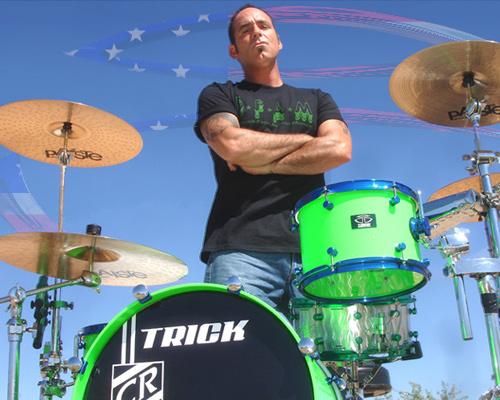
UberProAudio: Thanks for taking the time to speak with us, Chip! What drum kit are you sporting these days?
Chip: No sweat! I’m stoked to be doing an interview with UberProAudio.com, so thank you! I always enjoy checking the site out and learning about who’s playing what. It’s really cool.
I’m currently playing my custom, four-piece neon green kit made by Trick Drums. I now play the Dominator series pedals from Trick, too. Some trivia about the pedal – it looks different than the standard pedal and is only one of three footboards from Trick to ever leave shop with a name on it. One is mine. Another was sent to Chris Adler of Lamb of God.
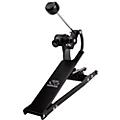
The other was a Pro V1 model that was laser-engraved for Mick Jagger and purchased from Trick two years ago. Mick doesn’t officially endorse drum gear – the pedal was bought by his “people” for his birthday. He plays drums, too!
UberProAudio: What made you want to spice up live shows with your renowned tricks and stunts? As opposed to just playing straight-forward beats.
Chip: That all started when my brother took me to see Stryper in 1987. I saw Robert Sweet playing drums, and I wanted to be like him. It was just really cool to see and hear his use of visual and sonic combinations. I had never seen or heard a drummer play like that before, and after that, I wanted to be like Robert Sweet.
That was when I really first got interested in showmanship.
UberProAudio: You have access to practically any drum kit you could ever want. But walk us down memory lane and tell us about your first experience with a drum set.
Chip: My first experience with a real drum set – after all the pots, pans, etc. – was actually a pretty sad memory because of my initial lack of ability on the kit.
I set myself up by so much air drumming and playing on Kentucky Fried Chicken buckets that I thought I was going to be able to play drums much better than I did. I got super depressed after first trying to play – it was way harder to do what I wanted to do than I thought it would be and, well, I wasn’t naturally capable of playing like some people my age seemed to be.
But looking back, I was twice as motivated as anyone I knew and was willing to do just about anything to really be able to play the full drum set. My mom got me drum set lessons – the first beat I was taught to play was a Cha Cha type beat. I practiced the hell out of it every day, dreaming of one day being able to play like the drummers on the songs my brother listened to at the time – like Alex Van Halen and Phil Rudd.
The first song I ever played in time, from start to finish, was “Louie, Louie.” And I played a basic rock beat along with the recording on my first drum set. My teacher made a big fuss the first time I got through it, and it was a great day.
If I wasn’t completely in love with drums and drumming before that moment, I certainly was ever since playing through that first song. To a kid who’s trying to play, the teacher’s response, good or bad, is so important. Over the years I am very lucky to have had lessons with some really great instructors who inspired me. That first teacher I had, on that day, with a simple “that was great!” and a high five, changed my life forever in a positive way.
UberProAudio: Let’s talk about your famous drum tricks. How long does it normally take to develop and master one?
That’s a tough one to answer. I think it depends on the trick or the move.
Showmanship can be just as subjective as music is. I think the attitude, or the way it’s presented sometimes, can be as cool or even cooler than the trick itself. In other words, the spirit or intent behind the trick is just as important as being able to pull it off.
If the stick leaves your hand, the risk of dropping it goes way up obviously. So there’s a big difference between the time it takes to work up a basic move versus something where the stick leaves your hand. If you take one move, like throwing a drumstick up in the air and catching it in time – if you’ve never throw your sticks up and catch them, then that move is going to take much longer for you to get down than other moves.
If a drummer who has never incorporated stick tricks in their playing wants to start, the fastest way to get going is to watch older drummers or the showmanship type drummers and think about when they do their move, why, what’s going on with the song, and so on. Some of them can take quite a bit of time. Others can be done immediately.
The attitude and motivation for simple things – as simple as holding your stick up in the air – can be developed and mastered by someone in as little time as one practice session. Spinning or faking a spin while holding the drumstick can then be put into your bag of tricks as soon as you can get the spin going, because you started already with holding your hand up.
They typically get more difficult from there. But I’ve seen nine-year-olds incorporate high-held, fake spins while playing in time to great effect – all within two weeks time.
Well, I think if a nine-year-old can do that in two weeks, any adult who wanted to should be able to handle it within four to five weeks. Right? Ha!
Once you get a trick down and find how to use it to express yourself, it starts becoming just another part of your playing. It’s not like you’d sit there and plan – “On the seventh bar of this tune, I’m throwing stuff…”
(Click the next link to go to the next page of the interview)
UberProAudio: How do you come up with an idea for particular trick? What inspires you to create something new?
Chip: Listening to and watching players like Johnny Rabb inspires me to create something new by seeing his examples of creativity and his ridonkulous level of ability and skill on the drums.
If someone’s not having fun, I personally find it hard to see how they could be playing the drums. Any trick that doesn’t seem to work is almost always because it was forced or not truthful. Or it came from a lack of motivation or lack of inspiration. Like music – it’s always better if it’s honest.
If you’re not having fun, it’s probably better if you don’t do stick tricks at that time. So I come up with Tricks usually while playing and really getting into a “fun zone,” so to speak. I remember them mostly if I think they were cool, I do ‘em again.
I honestly enjoy throwing stuff. If I’m happy and the sound is right, well, sometimes I end up throwing stuff! Most of the time, it’s nothing more than a side of my playing that I just do because I’m really in the moment and having fun because I’m playing drums.
If I go into a situation playing a very sad or slow song, believe me – at that time, I’m not throwing stuff or spinning anything. I hope that makes sense!
I’m looking at doing some real big band type stuff this summer. That, to me, is the ultimate drumming challenge – where your sound is so key to the sound coming off the stage with those horns.
As far as tricks and moves go, the best ones almost all come from variations of very old moves that the great big band drummers used to do in the 30’s and 40’s. Gene Krupa, Buddy Rich, Poppa Jo Jones, etc.
There aren’t really any drummers like that anymore. Their music was awesome, too.
If there are drummers alive that could even begin to play that way, with a band you know, it would have to be a headcutter.
A ninja-level player like Johnny Rabb. That guy is one of the most underrated masters of our time. And no, I don’t use the word “master” lightly. All drummers who witness that guy play live know what I’m saying and why. He’s got all of it in spades. As far as what I think it takes to be called a truly amazing drummer – the raw skill, the highest technical proficiency, which comes from insane dedication to the instrument. And, in my opinion, that has led him to a freakish, Bruce Lee level of “honest self-expression” with his music and therefore his drumming.
So, as to what inspires me these days, Johnny Rabb’s playing has inspired me to try and become a better drummer. He’s currently one of the best and vibrant drummers alive. Watching and listening to drummers like him makes me want to play drums even more, and that’s where I get my inspiration.
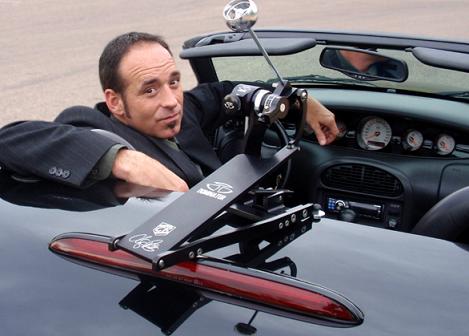
UberProAudio: Describe to us your favorite trick. What makes it the best in your eyes?
Chip: My favorite trick is a no-look, behind-the-back stick flip.
It’s hard to do. But sometimes, when my friends bring someone new into the local club, I’ll look over at them to the left. And while I’m playing, I’ll flip my right-hand-side drum stick from behind my back and catch it in front of me high with the same right hand.
That’s a good one because they laugh and clap 100 percent of the time. If I fail on it, or drop it, or hit the guitar player – like in the “Stick Tricks” video – I’ll make a great big face of shock and wonderment. Which also gets laughs and claps 100 percent of the time. So it’s a no-lose trick. It always works out great.
UberProAudio: Talk to us about your many sponsors and endorsements – Trick Drums, Paiste Cymbals, and Trueline Drumsticks, to name a few. How does their equipment enhance your tricks and signature sounds?
Chip: You could say that any self-confidence will enhance your tricks. If you’re on the best gear, you’re gonna have some built-in confidence off the bat. And my Trick drums do that for me every night.
They also blow sound engineers away on a regular basis. Eight years ago my resident drum guru and friend in Tucson, known only as “E,” kept bugging me to come hear his new snare drum. I had just spent $5,000 on a Mapex Orion drum kit and had no intention of trying out another brand or drum set.
But “E” kept telling me about this super snare, which had magical powers of sound and so on. After the fifth phone call, I agreed to meet up and check out a local band whose drummer was playing the snare on loan. I was at the back of the building in a full house, there was no PA used on the kit, and the Trick snare drum burnt the hair off my eye brows. It cut through the room – it had crazy power and was just amazing.
I ordered my first Trick snare drum the next day and haven’t looked back since.
In my opinion, Trick just makes better drums. I sold my DW drums a week after purchasing the Mapex, and the Mapex kit was gone a few days after my Tricks came in.
I’m not saying the DW and Mapex were bad – they were great kits and sounded great.
I just really enjoyed the Trick’s response and tone more-so than the wooden kits.
Trick makes the Ferrari of drum sets and pedals. The best of the best. Once you get to that Cadillac-level of drum sets, I think the top three wood company’s all are about the same. They all make fantastic products at that level, and the preference at that point is simply personal taste.
My personal taste for drums since hearing that snare and playing my first kit has been Trick. Period. The drums are designed to resonate and are made of AL13, an aluminum alloy mix that has no glue or plies like the old wooden drums are still made with. Nothing I have ever played compares. I love ‘em.
I then applied to Trick for endorsement about seven times in two years. I bugged them with updates and pictures and “news” they never asked for. Ha!
I’m glad they were so polite to me during that time. I probably would have been sick of it myself after the fourth application. Months after I stopped, an amazing drummer named Dom Moio took Troy Luckutta from Tesla – one of Dom’s students – down to a bar in Phoenix called Char’s, where I was playing. Dom and Troy later told Trick’s President, Mike Dorfman, that I could in fact play. And then out of the blue, Mike sent me an e-mail stating they would be happy to add me to their roster.
So I had my dream kit, and I was to be signed with what I still feel is still the coolest drum company in the world. When Trick’s president e-mailed me, it was one of the best days of my life. At one point a few years into it, I was the west coast A/R rep for Trick. I later stopped doing that so much so I could focus more time on my own things. But I still get calls from them from time-to-time to chat about who’s playing what.
Sometimes I’ll see a promising drummer and call them to let them know my take. I’m very proud of my relationship with Trick, and I think in years to come they will only continue to help drummers be more effective with their innovations.
Drumsticks – I had my signature model drum stick made by Trueline about six years ago and had found out this year that they are out of business due to various reasons and the economy. Very recently, I had to find a great pair of sticks to use that I could work with. And I found my match with Pro Mark.
The process took me about three weeks of playing with various brands. Some brands make decent sticks, some have bad batches because of the quality of the wood used. I found my favorite sticks, and I’m both happy and proud to say that as of May this year, I am now an official Pro Mark artist. And we are soon coming out with some www.chipritter.com signature Pro Mark sticks.
When I first heard about Trueline closing, I went out and bought all the top shelf sticks made in the world – Pro Mark, Vic Firth, Vaters. I kept switching back and forth and found myself going back to the Pro Marks every time. I have to add honestly that the fact that Johnny Rabb plays Pro Mark – well, I also really wanted to play Pro Mark.
Again, everyone has a personal preference when it comes to gear and there are great companies out there. These are just my personal choices.
As far as cymbals, my favorite sound has always been Paiste. My whole life, I ended up going back to Paiste after trying the other top cymbals.
I have played other brands, and I had talked to other companies at times. But the quality of the Paiste cymbals and the overall results I got with Paiste on studio and live shows kept me coming back to them.
Being an artist with Paiste is an honor for me because I feel that they really make the best cymbals in the world. Again, preference, but also results from my personal experience –using the product before endorsing it.
That’s about it as far as gear. Trick, Paiste and Pro Mark are what I’m playing, and their sound is what truly keeps me happy with the sound I’m getting. Ultimately, they all help me with my sound. By using these drums, cymbals, and sticks, I just flat-out sound better. And that influences me greatly to do my best every day.
(Click the next link to go to the next page of the interview)
UberProAudio: Let’s move onto your recent instructional DVD, “Stick Tricks.” What can both amateur and professional drummers take from it?
Chip: Fun. They can take the barebones truth of how I learn and teach tricks, and save themselves years of messing around with other methods.
I really think there is something in that video for everyone. I would have never put that out or have been able to get it put out by Mel Bay if it wasn’t. I think that drummers can all get some fun from it and learn a few inside “secrets,” or rather personal methods, of getting stick tricks up and running at their live shows.
Whether they use 100 percent of the info or not, the advice is solid. And it’s my personal take on all of it. I doubt many will be juggling three sticks off the bat – that takes some time to get down. But the juggling is in fact explained in there, and the keys to everything I have done so far – all the moves I had done up to that point that actually work in real settings.
That’s what I think they can take from it. And to have some fun. It’s totally FUNstrunctional.
P.S. – funstrunctional is my word. You have to send me a quarter every time you use it. Ha!
UberProAudio: Not only are you a professional musician – you’re also an instructor. What sort of role did that play in filming the DVD.
Chip: It helped me greatly. I got a step up on many drummers who do videos because I got to see first hand the concepts I was trying to teach – what worked and what didn’t. So while every human learns a bit differently, being an instructor helped me cut out a lot of fat and get to the meat quicker of what should end up in each lesson to make the most of the time I was allowed.
I plan on using this method in “The Pedal of Boom” and the coming sequel to “Stick Tricks” that we are shooting now. “Stick Tricks II” gets into even more in-depth regarding overall showmanship and performance. But it won’t be out for another year at least. Mel Bay and myself agreed to release “The Pedal of Boom” video first, and that’s scheduled for Winter ‘09.
UberProAudio: What made you want to teach others as well as constantly perform and be on the road?
Chip: Well, I love drumming. When I see a young drummer who could not clap in time when they first met me – to see them get up and start to play his or her first real song, in real time, by themselves, with no help, sounding great… man!
There’s a moment when they have a realization or become aware of how cool it sounds. And realize that they are the ones doing it. Ultimately, the feeling that I am actually helping another person in some small way is what really keeps me teaching.
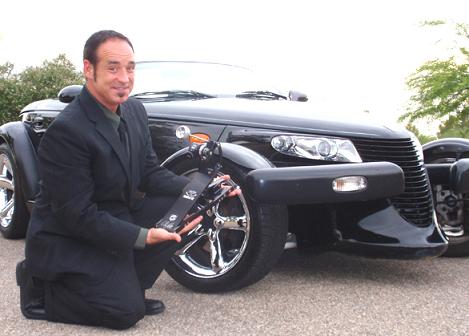
UberProAudio: Talk to us about “The R.I.T.T.E.R Method,” your insightful instructional book. How do your book and your methodology differ from the traditional?
Chip: Well, my book was a big step off the normal, and sometimes trendy, path. I wanted to put it out because, like the DVD, it was the book I had wanted someone to have written for me when I was 10.
Many guys put books out and say, “OK, now go play this.” I was always left with questions like, “OK, but what song first got you into drumming, and why?” They never seemed to answer that.
Carter Bueford put a video and book out that was four hours long and covered him playing songs from his band’s CD – songs I had already heard. I kept wondering, “Why don’t they ask him about his path? How did he really learn this thing or that thing?”
Many books don’t cover what most of us as consumers really want to know.
Dave Wekle is never going to put a video out with his own truth because he’s too cool for that. I figured I’m not that cool, and the best thing I could offer anyone was my truth about how I got to the point I was at. What took place, how I have learned exactly, etc. I’ve logged my mp3 drum solos for 10 years, and you can hear the progress if you download the Moscow solo from 2001 to the Letterman clip to my recent stuff – you can hear what I was talking about in the RITTER Method working for me.
Anyway, that was why I put it out. Kind of like a bunch of bread crumbs for younger drummers coming up who wondered about what I wondered about and was interested in learning about.
There was and still are no real books like that.
It was my honest and best advice regarding what I had learned on my path of drumming at the time. I put it out in 2000 first, then a second edition in 2002. I’ve learned a few more things since them, and the chapter on inspiration still applies like never before!
By the way, if someone reads it, they can see I made some predictions about Neil Peart regarding his switch to traditional grip. And they all came true. Like a Nostradamus! Ha!
Then again, I also said I didn’t really believe in double pedals. But I started playing them in 2006. So, I was a bit wrong about that!
If I did it again, there would have to be some “I learned this about that since then’s” added to it.
UberProAudio: You mention following Bruce Lee’s concepts in the book. How does The Tao of Jeet Kune Do intertwine with The Tao of Chip Ritter?
Chip: I got into Bruce Lee’s stuff out of just admiring his discipline, ability, and results.
His way of understanding matched up with Kenny Werners book, “Effortless Mastery”.
By the way, any musician that has ever played any instrument should go get that book now. Reading “Effortless Mastery” will change your life in a good way!
Anyway, the basics are just an ideal I feel has worked for me – Bruce Lee’s concepts of training hard. But then you “forget” your training, not having to think so much but to be, act, and re-act. That’s the heart of what I teach and try to do as well. When you’re thinking too much, you probably don’t sound anywhere near as good as you could if you were to “let go” and “be like water”.
I am far, far from reaching that point still to this day. But I can see results in my playing from solos I did years and years ago to today. And I know I’m still getting better.
I guess that’s how it would intertwine. The more your body and muscles really know, the more space you have to let your higher parts of your brain participate in natural movement. The more honest you can act and re-act.
With drummers, it comes down to base muscle familiarity. Without redundant training, your body has no need to remember. With it, it gets comfortable and familiar. No different than how much easier it is to walk through a house you’ve lived in for years versus a strange hotel you’ve never been to before.
But like I said, I’m not all the way there. I’m still very much a work in progress!
(Click the next link to go to the next page of the interview)
UberProAudio: Every drummer and music aficionado remembers your display on “The Late Show with David Letterman ” in 2004. Describe to us playing that gig.
Chip: Before I went on I prayed to God to help me and thanked him for getting me there. It was a really big deal to me at the time. And it was really scary, but cool at the same time.
It was super scary because of the cold, the size of the show, and the size of the audience on TV. I only remember thinking, “Breath!” when I put the stick in my mouth. And I remember thinking, “Go!” when I started to juggle. And thinking, “Stop and catch it!” when I finished.
I remembered more as the weeks went by. But the performance itself was a blur. It was a mixture of fear, but also of a “do your best” and “you can do it” feeling. Looking back, to be brutally honest with you, I seriously think God gave me the “do your best” feeling because I asked him to. I try not to ask God for everything. But that was a scary time, and I had to call out!
I only regret that the cameras didn’t show the band yelling and pointing at me when I stopped. They were so cool – the whole band was yelling for me, and I felt overwhelmed and super happy when I finished. I will remember that the rest of my life.
Scary also because it was so cold. The workers back stage all had parkas and thick winter coats on. Drumming when it’s really cold is a bit unnerving, and throwing and catching drumsticks in cold weather is pretty tough. The thought of dropping my sticks was pretty scary. Plus the fact that I knew if I did drop them, it would also follow me the rest of my life. As well as in front of my Parents, students, and friends.
But even though I was afraid, I loved it. I’m glad I did it. Everyone backstage was laughing and clapping. Loretta Lynn and the guy from the White Stripes told me I rocked, and that was wild to me. David Spade also stopped me in the stairway and said, “Dude! I thought you said you were going to do something stupid? That was cool!”
That was a highlight in my life for sure. It was very scary for me and cool at the same time. I am very grateful I got the chance to go on there.

UberProAudio: Can’t help but ask, Chip – what’s with your fascination for snow globes? They’re all over your web site!
Chip: I’m a drummer, therefore I like anything that’s shiny – from diamonds to tinfoil. There’s shiny glitter in them. And I also think snow globes are funny.
Seriously, anyone who doesn’t like snow globes needs a chipritter.com snow globe. If you get one, you’ll dig it for sure. Chipritter.com snow globes rock. They’re up there because they make you crack up and laugh when you shake ‘em.
The story behind the snow globes is that my friend Kevin Ironside and his wife Sandi collect snow globes. One time at Kevin’s house I asked him, “Hey man, where’s the drummer in a snow globe? Or a drum set? All these snow globes and not one drummer? How come you gotta be a hater, yo’?”
To which he replied, “Well, you should get off your butt and go make some then!”
We talked about how funny it would be, since I juggle sticks, to put myself in a snow globe with drum sticks falling all around. I called my Mom – she got online and helped me find a connection. We made some calls and e-mails. The drummer in a snow globe was born.
They’re really cool, even if you don’t know me at all. It’s a drummer in a snow globe with drumsticks floating around. Kids really dig ‘em. When I’m with someone that hasn’t seen one yet I usually shake one, then look at the sticks and say “Hmm…Yep! Looks like you’re gonna have a great day. But you should be careful crossing the street…”
Or something like that, as if I’m “reading” the sticks that fall. It’s pretty fun.
I did it with my Mom’s help. I did it for Kevin and his wife Sandi. They think the snow globes are funny. And I did it for my girlfriend, Carol Tracy, who would tell me, “You’re like Alex in Madagascar.”
She’d act like I was Alex the lion and say, “Check out my webcam!” I did it so I could look over to Carol and say, “I gave ‘em a snow globe. I can’t top that!” So I could see her laugh.
You can visit snow globe chip anytime at my website, http://www.chipritter.com.
Check out my webcam!
UberProAudio: Acclaimed drum tricks. A stint on Letterman. A popular DVD. A successful career as an instructor. What’s next on the agenda for Chip Ritter?
Chip: This summer, I plan on finishing my second DVD with Mel Bay. It’s all about the bass drum, and I can’t wait to tell you guys more when it’s finished.
Also this summer will mark the debut of my first real big band show, where I get to try to seriously play big band music with a 19-piece group in August. Joel Dunst is the drummer and bandleader, and I get to do some double-drum soloing swing stuff that I’m very stoked about.
After that, more drum clinics and regional shows. You know I’ll also be web surfing though UberProAudio.com to check out who’s playing what. Since I’m still kind of a consultant for Trick’s A/R rep team, I always find that information of great interest!
Thanks so much for your time, and thank you UberProAudio.com!
Chip's Full Gear and Sponsors Info
Trick Drums U.S.A.
Four piece neon green kit made by Trick Drums, complete with Attack Drumheads, 20 x 18 BD 12 standard tom 14 snare, and 14 low tom. Trick’s new Dominator series pedals.
Paiste Cymbals
Twenty Series Hats, 16” Reflector Crash, 18” Reflector Crash, 20” Full Ride
www.paiste.com
Pro-Mark Drum Sticks.
Chip Ritter Signature Pro-Mark Drum Sticks.
www.promark.com
D.F.A.M.
Drummer From Another Mother Clothing
Stick Tricks DVD by Chip Ritter - Mel Bay Publications -2007
Chip Ritter and The Pedal of Boom - Mel Bay Publications – 2009
www.melbay.com
Photos provided courtesy of Charles Faucher.
Interview by Alex M. Cole. Alex is an award-winning journalist and music fan.


